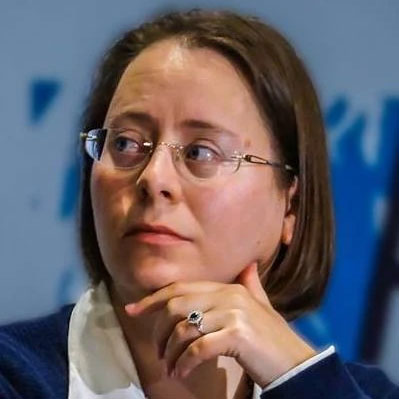Creating the European Asbestos Forum
Awareness & ResearchWritten by Yvonne Waterman | Edited By Walter Pacheco

I founded the European Asbestos Forum Foundation in 2014 as a direct response to the need for a connected and global professional network on asbestos information. I was frustrated going to many different conferences (e.g., lawyer-centric or doctor-centric conventions) and watching everyone try to reinvent the wheel, costing precious effort and time.
Asbestos professionals worldwide have worked on extraordinary projects for decades, but their success was often silent. Teams of scientists, activists, safety experts and more had few ways to collaborate and share their accomplishments in reducing asbestos exposure risk.
Since then, I’ve been privileged to help grow the EAF into an event that has led to new insights into managing mesothelioma and solutions for common asbestos problems using innovative science and technology.
Time is short when it comes to asbestos disease. There are answers for improving safety and treating illness, but spinning our wheels and retreading the same path costs precious time and lives.
The EAF’s different approach is multidisciplinary and global, so all sorts of asbestos professionals can learn from each other. Each of its conferences has been a step in making those answers more widely accessible. This attitude is reflected in the EAF motto: “Sharing makes us stronger.” It takes all of us, is what I keep reminding people. We all have our part to play.
International Presence Highlights Worldwide Asbestos Issues
Many countries worldwide, including the United States, have still not banned asbestos. You can buy asbestos bricks from China or Indonesia. Chinese companies will claim they have no asbestos in their products when they mean “less than 10%.”
Asbestos cement remains a thriving industry in India, with substantial advertising. There is information reaching the general and underprivileged population that asbestos is safe and harmless.
Many people in these countries turn to cheaper alternatives for building materials that lead to asbestos in schools and homes. In several ways, we have yet to see the worst effects of decades-long asbestos exposure in these large populations.
For the global community, asbestos is all around us and on every continent. Paying professionals to remove hazardous materials is a privilege that few can afford.
The EAF provides opportunities for exposure to new perspectives for asbestos experts everywhere. At the EAF, speakers worldwide share the most reliable and up-to-date knowledge on asbestos legislation in their homeland. This year, Colombian and Mexican activists collaborated on new ways to introduce an asbestos ban in their countries.
Successes From Past EAF Forums and 2022 Highlights
My history with asbestos litigation goes back to around 2000 when working as a personal injury lawyer while also working on my Ph.D. thesis on comparative employer liability law. My first research on occupational diseases uncovered that asbestos was the most lethal occupational disease hazard.
I started noticing that asbestos was everywhere in the Netherlands and above our heads in almost every building. Considering population size, the Netherlands has suffered one of the worst asbestos mortality rates. In addition to mesothelioma, asbestos causes lung, laryngeal, stomach and colon cancer and discoveries of new causal relationships mean that the list of asbestos-related diseases gets longer all the time.
In 2014 at an English asbestos conference, I realized that the attendees were oblivious to the latest developments in neighboring countries, nor did they know any of their counterparts. Outside a country’s borders, no one knew what was happening in the global community of asbestos professionals.
A year later, in 2015, I launched the first EAF conference with Dr. Richard Lemen as the keynote speaker. Dr. Lemen is a former assistant surgeon general of the United States and was appointed by President Obama in 2009 as a member of the Advisory Board on Radiation and Worker Health.
At the fourth EAF conference in 2019, Dr. Arthur Frank talked about how even short-term asbestos exposure can cause significant harm. The primary takeaway was that asbestos could affect anybody from any walk of life.
At this year’s EAF, the fifth, we had Tony Rich present his fantastic exhibition of asbestos-related photographs. Unique skills such as his help raise awareness and make an impact that words on a page can’t match.
This year’s keynote speech included a new method of denaturing asbestos cement and destroying toxic fibers for safe, asbestos-free recycling. The innovative science uses mildly warm water to produce a safe cement slurry and uses less CO2 than conventional means. The cement industry can reuse the slurry or in a dry powder form.
Optimism for the Future
I always write the EAF conference program from an optimistic perspective. We all know the fundamental problems, but we must look ahead and deal with them. Perhaps it comes from my jurist background, but I am compelled to help find a solution to the asbestos problem. Plus, there is no substitute for exciting innovation and inspiring awareness campaigns.
The EAF provides a podium for the newest technologies that remove asbestos waste faster, safer and more affordably than before. We can achieve global asbestos eradication, even if only for future generations.
Eradicating asbestos across Europe is a monumental task, but seeing the efforts of professionals together in one place at the EAF creates a sense of hope. There are some 70 countries with an asbestos ban, and another one or two join the list yearly. Gradually, we’ll work toward a safer world.
I recently told a colleague that people in the future will be surprised to learn that we once built roofs from cancerous materials. I hope such stories will sound bizarre one day. We have a long way to go, but the global reach of the EAF foundation will welcome and involve everyone who can make a difference.




